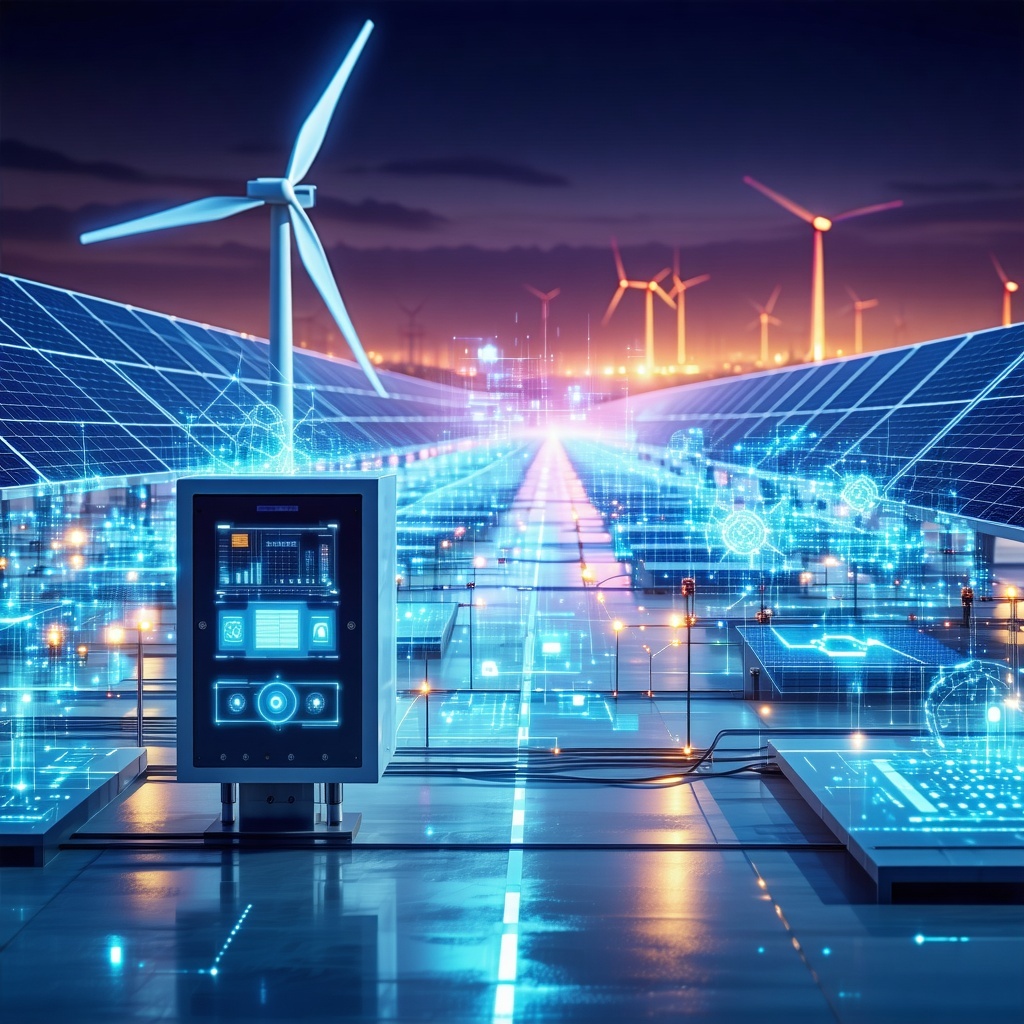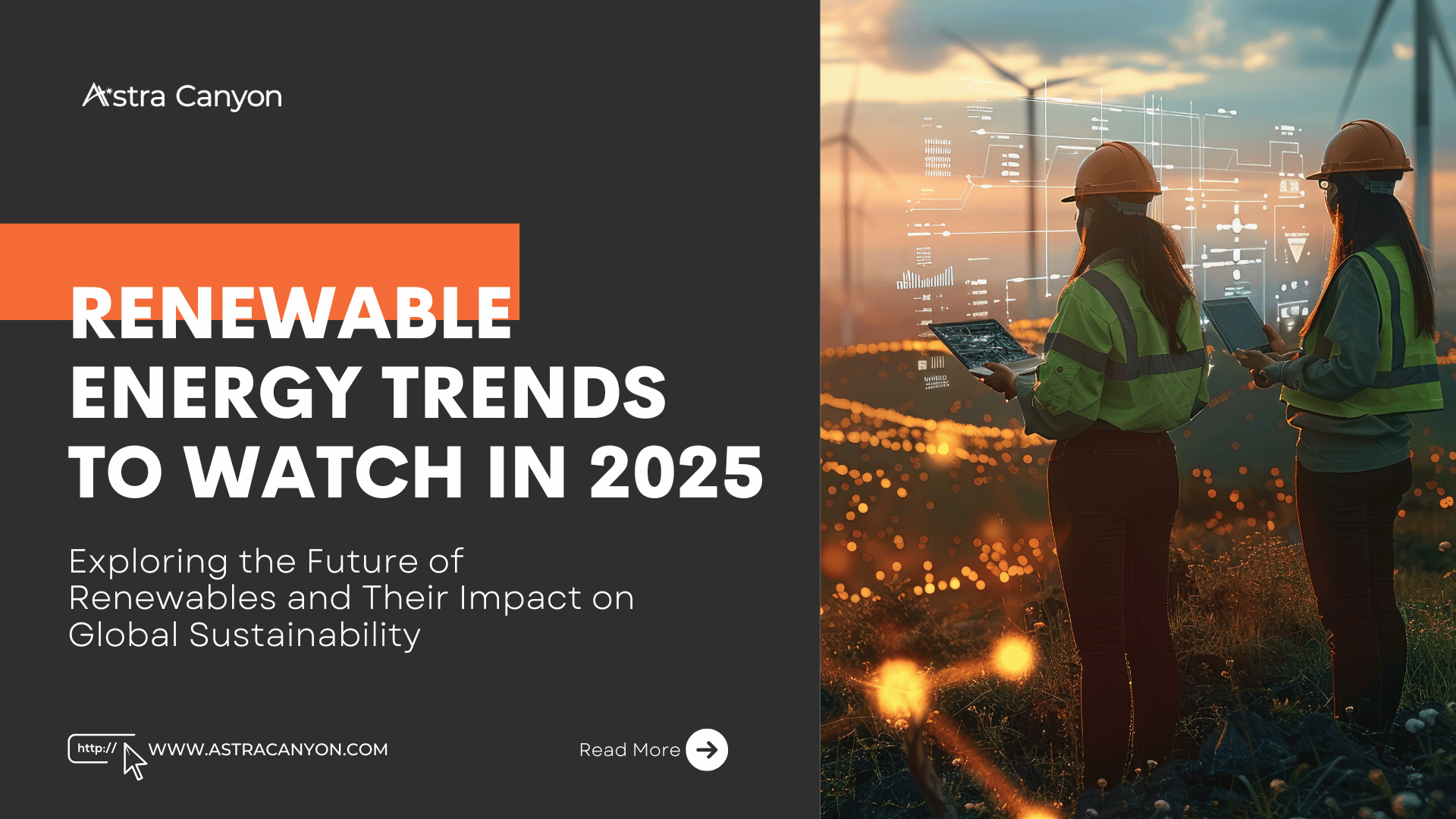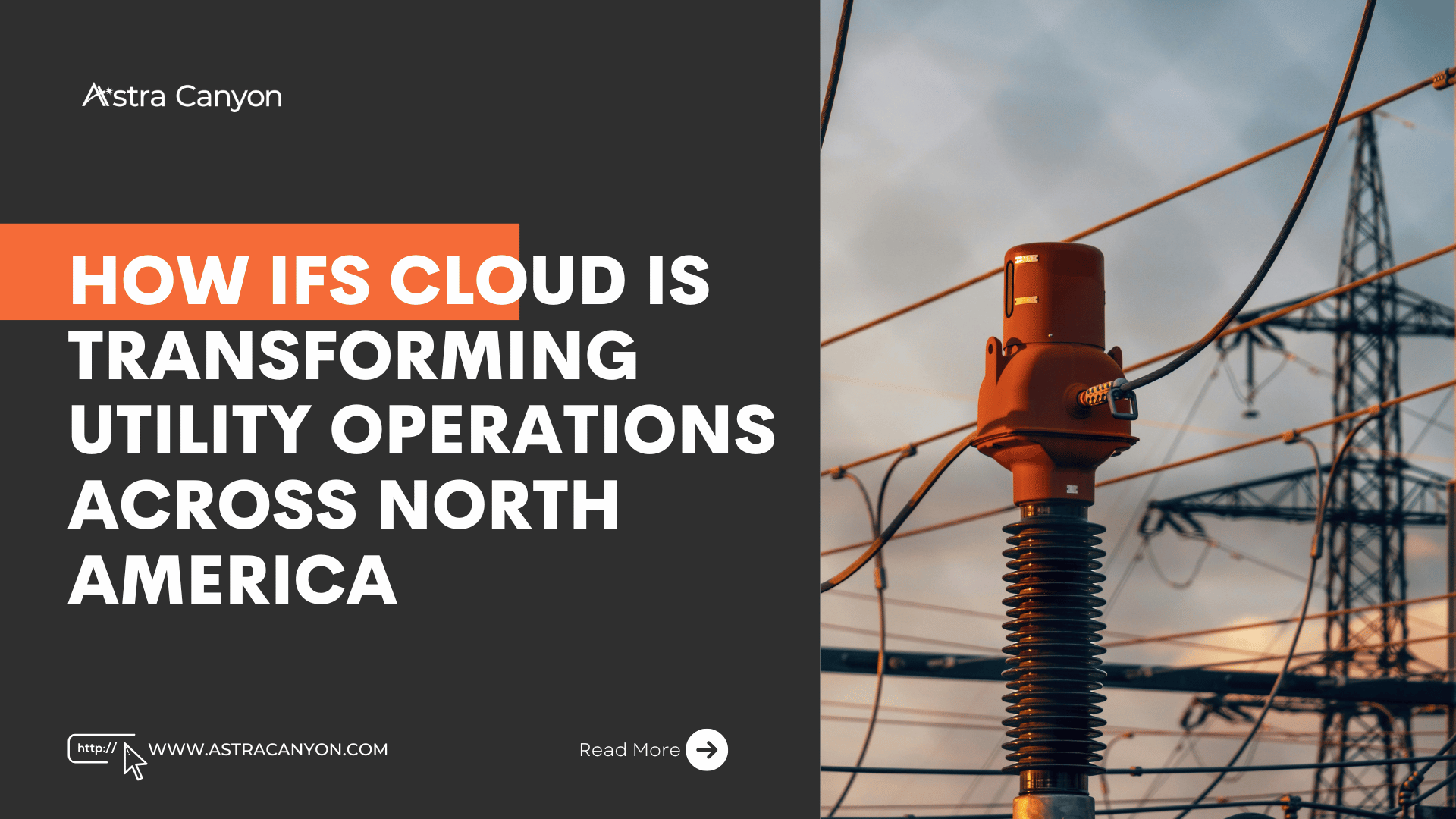The Future of Smart Grid Technology: AI, Power Electronics, and Energy Efficiency in Practice
Traditional power grids aren’t designed to meet the demands of the future of smart grid technology. As renewables scale and energy consumption...
9 min read
 Astra Canyon Marketing
:
Jun 5, 2025 5:00:00 PM
Astra Canyon Marketing
:
Jun 5, 2025 5:00:00 PM
How exposed is your energy operation to cyber threats? In 2023, the energy sector ranked as the fourth most targeted industry for cyberattacks, according to Statista. This underscores just how attractive energy infrastructure has become to both cybercriminals and state-sponsored actors. As utilities modernize grids, adopt renewables, and digitize field operations, they’re also expanding the attack surface, often faster than traditional security models can adapt.
For leaders in the energy industry, the risk is not theoretical. Cyber incidents now carry the potential to halt operations, disrupt national supply chains, and undermine public safety. To manage this threat landscape, security can’t be an afterthought. It must be embedded at the core of every operational and digital decision. A secure-by-design IFS ERP strategy enables centralized oversight, enforces rigorous access control, and strengthens cyber resilience across both IT and OT environments, making it a critical asset in today’s high-risk energy ecosystem.
The energy industry confronts several significant cybersecurity challenges. Pinpointing these specific threats clearly is the essential first step for energy companies to effectively protect their crucial operations and maintain a dependable energy supply.
Ransomware attacks continue to be a powerful tool for cybercriminals targeting the energy sector. These attacks often lock up essential control systems, effectively shutting down operations until a ransom is paid. The Colonial Pipeline incident showed us just how serious this can be—fuel supplies across the southeastern U.S. were cut off for days, causing widespread concern. In these situations, the risks are not just financial. Power outages, breakdowns in the supply chain, and even threats to national security become very real possibilities. To handle these events, companies need resilient systems and well-practiced incident response plans to quickly isolate the problem, recover, and keep operations running.
No energy company works completely alone. The sector relies on a complex network of vendors, service providers, and infrastructure partners. This interconnectedness introduces new cyber risks that are hard to track without the right systems. Attackers often use these relationships, finding ways into networks through third parties that might have weaker security. New rules, like NERC CIP in North America and Europe’s NIS2 directive, are starting to require stronger security controls across these supply chains. But simply following rules isn't enough without a central way to oversee vendors, track them in detail, and check their performance in real time.
The growth of smart grids, systems for monitoring renewable energy, and intelligent devices in the field means the energy sector now uses thousands, if not millions, of Internet of Things (IoT) endpoints. A key cybersecurity challenge is that many of these devices don't have basic security features, like encrypting the data they send or ensuring their firmware (internal software) is secure. Once these devices are out in the field, they can be very difficult to update or monitor all the time. The problem gets bigger as these IoT networks in the energy sector expand quickly. Each new device added can potentially create a new weak spot. The industry needs to move towards building security into these devices from the start, managing them centrally, and linking them with company-wide monitoring systems.
Industrial Control Systems (ICS) and SCADA (Supervisory Control and Data Acquisition) networks are the operational heart of our energy infrastructure, managing everything from power plants to the electricity grid. In 2023, the energy sector represented 20% of all vulnerabilities reported in CISA ICS advisories, showing how much attackers focus on this area. Many of these crucial systems run on older technology platforms. These legacy systems are often difficult to update with new security patches because they might not be compatible with modern security solutions, or taking them offline for updates could disrupt critical services. This makes them naturally more open to cyberattacks. A successful attack on these systems can lead to serious power outages, damage expensive equipment, or create dangerous situations, posing both digital and physical threats.
Even with the best technical defenses, people can unintentionally become a weak link in cybersecurity. Phishing, where attackers use deceptive emails or messages, remains one of the most common and successful ways to start an attack. It's often the first step to launching ransomware or stealing login details. In energy companies, if an attacker gets hold of an employee's credentials, they could potentially access sensitive SCADA systems or tools used for scheduling fuel. Consistent training, building awareness about these tactics, and using layered access controls are all essential to reduce this persistent risk.
Energy infrastructure is increasingly becoming a strategic target during times of international tension. State-sponsored attackers use sophisticated methods, known as Advanced Persistent Threats (APTs), to quietly get into critical systems. They might stay hidden for months, not for financial gain, but to cause disruption, gather intelligence, or gain an advantage in political situations. We've already seen energy systems in Europe disrupted by suspected nation-state activities. This highlights why it's so important to share threat information and work together internationally on cybersecurity. Defending against these advanced attacks requires more than just firewalls; it needs deep connections between company systems, advanced threat detection tools, and cooperation across the entire energy sector.
To effectively counter the wide range of cyber threats, energy companies need to adopt proactive and well-rounded cybersecurity strategies. Building true cyber resilience in the energy sector means looking at risk and defense from all angles.
To truly secure the energy sector, companies need one clear cybersecurity strategy that covers both their Information Technology (IT) systems and their Operational Technology (OT) systems. IT systems handle data, business applications, and communication, while OT systems control the physical equipment like turbines, substations, and control centers. If these two worlds aren't speaking the same security language, gaps can appear, making it easier for cyber threats to slip through unnoticed. A comprehensive cybersecurity strategy ensures that security policies, data protection measures, and incident response plans are consistent across the entire organization, making the overall defense much stronger.
Energy organizations can't protect against threats they don't know about. Regular cybersecurity risk assessments are vital to help identify the most critical vulnerabilities before attackers find them. These assessments give companies a clear understanding of the current cyber threat landscape. This information then guides decisions about where to spend security budgets, how to allocate resources, and when to update security policies. Just as important is having a current, well-documented incident response plan. This plan needs to be tested regularly through realistic simulations and drills to ensure that the business can continue to operate smoothly, even when under the pressure of a cyberattack.
Good security practices are essential. For instance, network segmentation helps to limit how far a threat can spread by isolating critical systems from other parts of the network. Adopting a "Zero Trust" architecture, which means no user or system is automatically trusted (even if it's inside the network), adds another strong layer of protection by always requiring verification. Encryption is key to ensure that even if data is intercepted, it cannot be read or used by unauthorized parties. Furthermore, Identity and Access Management (IAM) frameworks are crucial for controlling exactly who has access to which systems and data, and when they can access it. This greatly reduces the risk from insider threats or from attackers moving through systems after an initial breach.
Energy companies don't operate in a vacuum; they rely heavily on a wide network of external vendors, contractors, and partners. Therefore, it's critical to evaluate the security practices of these third parties carefully. This means conducting supplier audits, using vendor security scorecards to track their performance, and including specific cybersecurity requirements in contracts. Internally, ongoing employee training programs are vital to help prevent accidental breaches caused by human error. Creating a company culture where everyone understands they have a role in cybersecurity can significantly reduce these types of mistakes.
Cybersecurity threats are constantly changing and becoming more sophisticated. Organizations must invest in systems that provide continuous monitoring to detect unusual activities and suspicious behavior in real time. Tools like User Behavior Analytics (UBA), which look for deviations from normal user patterns, and Security Information and Event Management (SIEM) systems, which collect and analyze security alerts, offer valuable early warning capabilities. Collaboration is also a powerful tool. Public-private partnerships, government agencies like the Department of Energy (DOE) and the Cybersecurity and Infrastructure Security Agency (CISA), and industry-specific Information Sharing and Analysis Centers (ISACs) provide extremely valuable threat intelligence that can help companies shape their defense strategies and respond more effectively.
Thinking of cybersecurity as an add-on or a problem to fix later is no longer a safe bet, especially as we look towards the future of energy. To build a robust and reliable energy landscape for tomorrow, security must be a fundamental part of how modern energy systems are designed, built, and run, right from the very beginning.
In the past, some might have treated security as something to bolt on after systems were already in place. This reactive method won't work against the advanced cyber threats targeting our increasingly complex energy infrastructure. For the energy sector, which will rely on even more interconnected and sophisticated systems, security needs to be a non-negotiable foundational element. It must be considered at every stage of planning and development for any new energy project or system upgrade. This means security requirements are as critical as operational or performance goals, ensuring safeguards are deeply embedded from day one. This makes them much harder for attackers to bypass and ensures the resilience of next-generation energy solutions.
The future of energy is already taking shape with innovations like smart grids, digital substations, and cloud-connected control systems. These new technologies are rapidly becoming the backbone of how we will generate, distribute, and manage energy. However, they also bring unique and evolving security considerations. Smart grids, for instance, involve a vast network of interconnected sensors and controls, each a potential entry point if not secured from the start. Protecting these modern systems requires a proactive "security-by-design" approach. This means conducting thorough risk assessments specifically for these new technologies, implementing strong encryption and access controls from their inception, and planning for secure updates and maintenance throughout their entire lifecycle to ensure long-term safety and reliability.
The line between the physical equipment that generates and delivers power (Operational Technology or OT) and the digital systems that control and monitor it (Information Technology or IT) is rapidly disappearing. This convergence will only deepen, creating a seamlessly interconnected ecosystem. While this brings efficiency, it also means a cyberattack on an IT system could more easily impact physical operations, and vice versa. Therefore, a holistic and unified view of security is essential now to prevent compounded risks in tomorrow's energy landscape. Energy companies must strive for an integrated approach, weaving together operational security practices with digital resilience strategies from day one.
IFS ERP serves as a powerful business management tool, and when implemented with security at its heart, it also acts as a key strategic asset to greatly boost cybersecurity within the energy sector. It offers a central platform that enhances visibility, tightens controls, and supports a proactive stance against cyber threats.
IFS ERP can act as a central hub for managing critical data, physical assets, and operational workflows. For energy companies, this unified view is essential not just for optimizing performance but for bolstering security. When information from various systems feeds into a single source of truth, it becomes much easier to detect unusual patterns, identify potential vulnerabilities, and address security issues quickly. IFS ERP enables proactive monitoring of asset conditions, tracking of security incidents, and maintaining the integrity of operations, all in real time. This comprehensive oversight is a core part of an effective cybersecurity strategy for the energy industry.
Effectively controlling who can access your systems and data, and being able to track their actions, are fundamental to good cybersecurity in the energy industry. IFS ERP supports detailed permission settings and role-based access control, ensuring that users only have access to the information and functions necessary for their jobs. It also integrates smoothly with advanced Identity and Access Management (IAM) systems. These capabilities help enforce the principle of "least privilege" (granting only essential access), which is critical for reducing risk, while also helping to meet regulatory requirements. The system provides detailed audit trails, which are invaluable during security investigations or compliance reviews.
Attacks targeting the supply chain remain one of the most significant cybersecurity threats facing the energy sector. IFS ERP provides tools that help companies monitor supplier performance, assess potential risk exposure from third parties, and maintain compliance with industry standards like NERC CIP-013. By managing vendor relationships, contracts, and associated risks directly within the ERP platform, energy companies can gain much tighter control over their extended ecosystem. This centralized approach is key to building a comprehensive and effective cybersecurity strategy that accounts for external dependencies.
A major strength of a modern ERP system like IFS ERP is its ability to securely bridge the traditional gap between Information Technology (IT) systems and Operational Technology (OT) systems. Consolidating and analyzing data from both these environments lets energy organizations gain a more complete and accurate view of potential security threats and overall performance indicators. This IT/OT integration significantly enhances situational awareness, enables more precise risk assessments, and supports faster, more coordinated responses when new cyber threats emerge across any part of the infrastructure.
The best software needs the best implementation to be truly secure. It’s not just about the features of the ERP system, but how it’s configured and integrated into your specific environment. Astra Canyon specializes in secure-by-design IFS ERP deployments that are carefully tailored to the unique needs and stringent security requirements of the energy industry. From initial architecture planning and data governance to ongoing compliance support, Astra Canyon helps organizations build IFS ERP systems that not only perform efficiently but also provide robust protection. With extensive experience across various critical infrastructure environments, their team ensures that energy companies can stay resilient and secure in today's high-risk cyber landscape.
Cyberattacks on the energy sector are becoming more frequent, more sophisticated, and more disruptive. From ransomware incidents and phishing schemes to ICS intrusions and third-party vulnerabilities, these threats put core operations and public confidence at risk. Managing them takes more than patchwork fixes. It requires a cybersecurity strategy that’s built into how your business runs.
IFS ERP, when deployed with security as a foundational element, gives you the tools to stay ahead: unified visibility, tighter control over access and data, and real-time insight across both IT and OT environments. It supports resilience not just at the network level, but across your entire operational landscape.
Astra Canyon understands what’s at stake. As a trusted partner in IFS ERP implementations for critical industries like energy, we align technology with real-world operational needs. Our certified experts build secure, scalable ERP environments that strengthen your security posture, without slowing down your business.
Schedule a cybersecurity and IFS ERP readiness consultation or book a demo to see how Astra Canyon helps energy companies secure operations and stay ahead of growing cyber threats.

Traditional power grids aren’t designed to meet the demands of the future of smart grid technology. As renewables scale and energy consumption...

Energy sector leaders and sustainability managers face increasing pressure to adopt cleaner, more resilient power solutions. With 2025 rapidly...

The utilities sector is undergoing a dramatic evolution as companies strive to balance the growing demand for renewable energy, adhere to stricter...